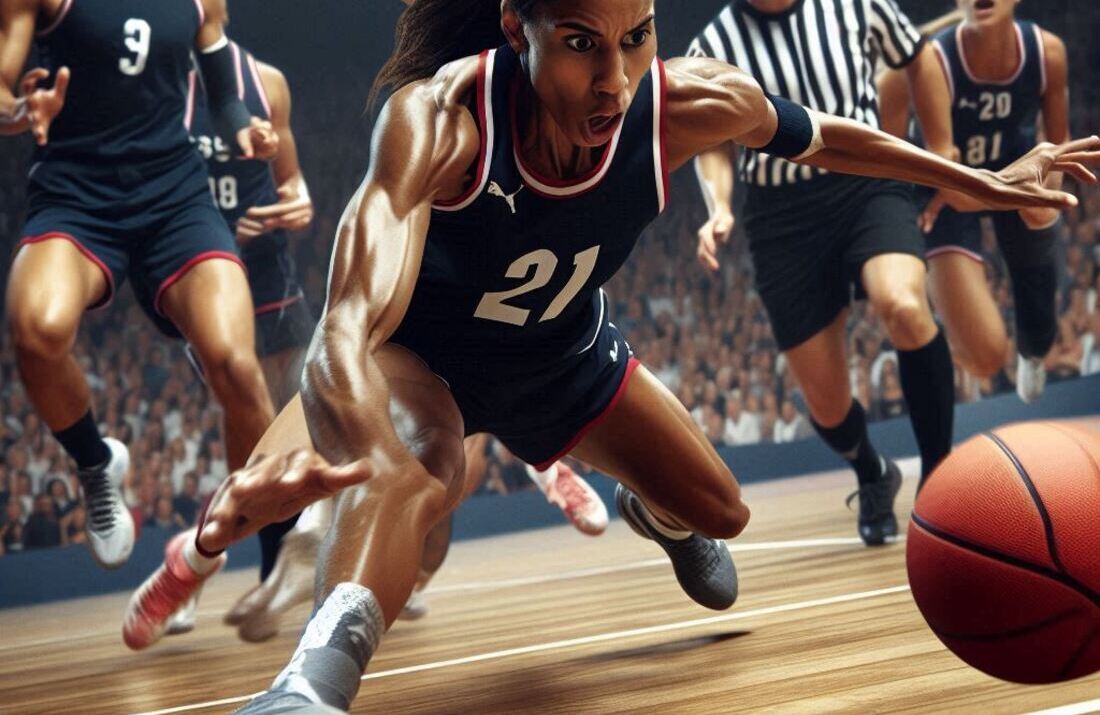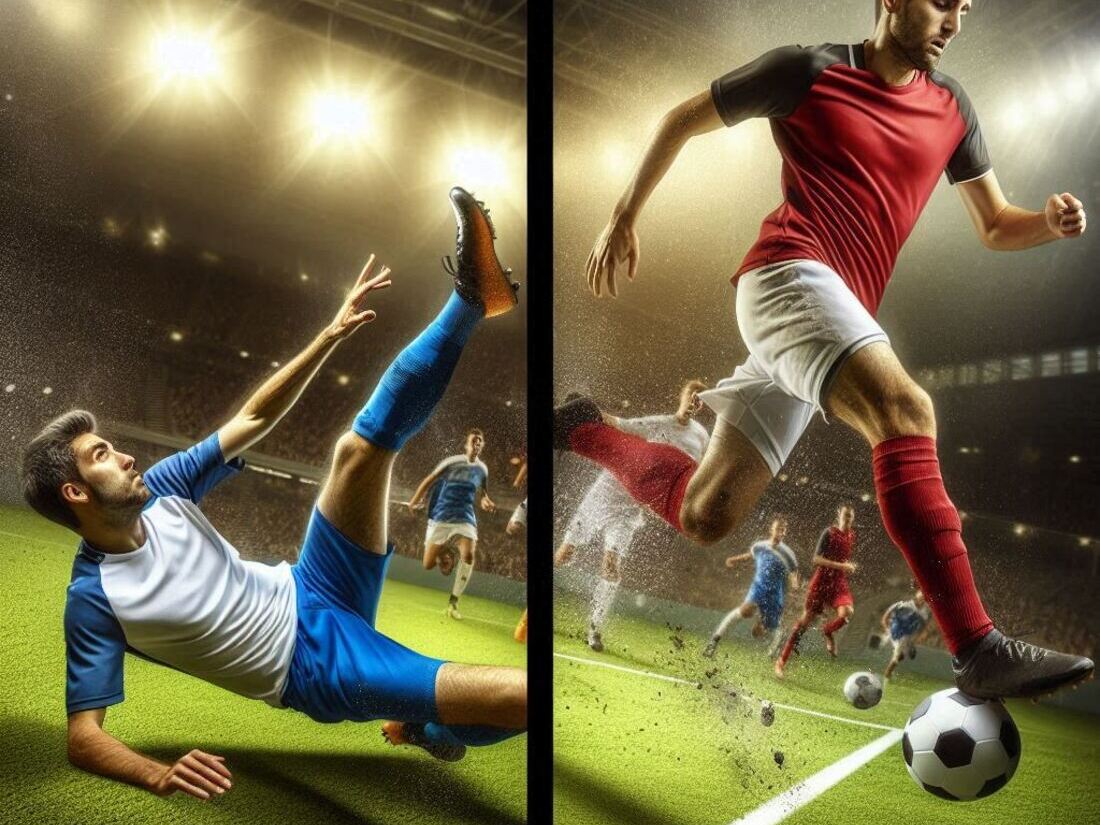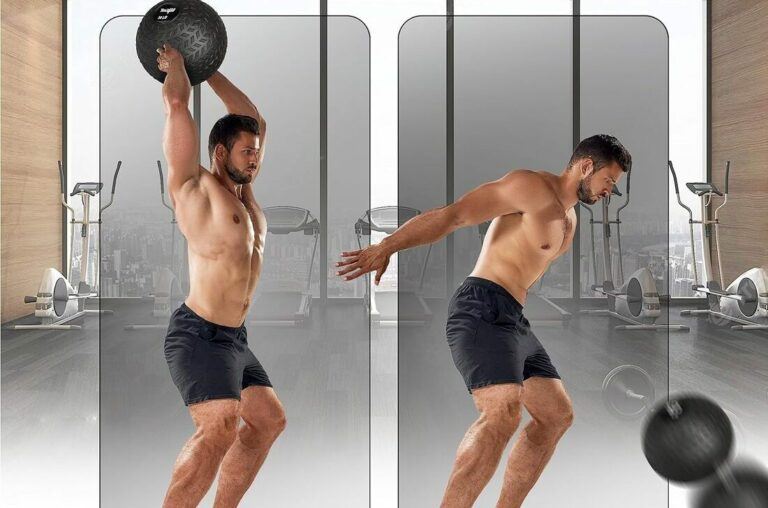You are locked in a close game, the tension thick in the air.
Suddenly, the ball changes direction in a flash.
Your opponent anticipates the shift, reacting with lightning-fast reflexes to intercept the play.
You, on the other hand, are a beat behind, a fraction of a second too slow, and the opportunity vanishes.

This scenario underscores a crucial element of athletic performance often overlooked – reflexes.
They’re not just about bragging rights in a game of ping pong.
Sharper reflexes translate to quicker reaction times on the field, court, or track, giving you the competitive edge you need to dominate.
But how do you train your reflexes beyond basic drills?
The answer lies in the ever-evolving world of fitness technology.
Several innovative apps have emerged, incorporating built-in reflex training programs into your workout routine, allowing you to hone your reflexes conveniently and effectively.
Target Audience: This blog caters to athletes (both beginners and experienced), fitness enthusiasts, and anyone seeking to improve their reaction time and overall athletic performance. We’ll explore how these apps leverage technology to enhance your reflexes, provide reviews of top contenders, and guide you towards choosing the perfect app to meet your needs.
Why Reflex Training Matters: Beyond the Ping Pong Table
While lightning-fast reflexes might seem like a superpower reserved for elite athletes, the benefits extend far beyond the realm of competitive sports.
Here’s how improved reflexes can impact your everyday life:
- Enhanced Driving Safety: Quicker reaction times can make a critical difference in avoiding accidents on the road.
- Improved Fall Prevention: Especially for older adults, faster reflexes can help prevent falls and injuries.
- Increased Overall Coordination: Reflex training often involves complex movements, leading to better body control and coordination in daily activities.
- Boosted Cognitive Function: Studies suggest that reflex training might positively impact cognitive function and brain health.

By incorporating reflex training into your routine, you’re not just improving your athletic performance; you’re investing in your overall health and well-being.
Unveiling the Science: How Apps Train Your Reflexes
These fitness apps utilize various techniques to challenge and improve your reflexes.
Here’s a peek under the hood:

- Visual Reaction Training: Apps display visual stimuli like lights, shapes, or changing symbols. You must react quickly by performing pre-assigned movements (e.g., tapping the screen, jumping squats) upon seeing the stimuli.

- Auditory Reaction Training: Apps use sounds like beeps, whistles, or voice commands to trigger reactions. Similar to visual training, you respond with specific movements upon hearing the audio cues.

- Cognitive Reaction Drills: Some apps integrate cognitive challenges alongside physical reactions. You might need to solve simple math problems or answer questions while responding to visual or auditory prompts.
These techniques mimic real-world scenarios athletes encounter during competition, where they need to react quickly to various stimuli while potentially processing complex information simultaneously.
Top Fitness Apps with Built-in Reflex Training Programs: A Comparative Look
Here’s a table summarizing the top fitness apps with built-in reflex training programs, including their type, features, and benefits:
(Note: Affiliate Links)
| App | Type | Features | Benefits |
|---|---|---|---|
| Centr | All-around fitness | Strength workouts, yoga classes, meditation, reflex training drills | Comprehensive fitness program, enhances agility and reaction time |
| Nike Training Club | Versatile training | HIIT, agility drills, instructor-led classes, customizable workout plans | Budget-friendly, wide variety of workouts |
| Fiit | Group and community workouts | Group classes, on-demand workouts, HIIT, agility training | Boosts reflexes, allows for social interaction and community engagement |
| Apple Fitness+ | Apple device users | Real-time stats, agility and reflex training sessions, yoga, meditation, strength training | Integrated with Apple Watch, diverse workout options |
| Sweat | Structured fitness programs | Agility and reflex training, nutrition plans | Tailored for women, comprehensive fitness and nutrition guidance |
These apps offer a variety of features to help you improve your reflexes and overall fitness. Which one are you most interested in trying out?
Key Takeaways
- Numerous fitness apps offer built-in reflex training programs, catering to various needs and budgets.
- Consider factors like features, subscription costs, free trials, and your specific goals when choosing an app.
- Look for apps with a variety of reflex training drills (visual, auditory, cognitive) for a well-rounded approach.
Beyond the Apps: Maximizing Your Reflex Training
While fitness apps offer a convenient and engaging way to train your reflexes, here are some additional tips to maximize your results:
- Incorporate Traditional Drills: Don’t neglect traditional reflex training drills like catching tennis balls or reacting to partner cues. These drills can be easily done at home or with a partner and complement your app-based training.
- Maintain Focus and Consistency: Treat your reflex training sessions with the same focus you devote to other workouts. Consistency is key for improvement. Aim for 2-3 dedicated reflex training sessions per week alongside your regular fitness routine.
- Warm-up Properly: Before diving into reflex drills, ensure your body is properly warmed up with dynamic stretches and light cardio. This prepares your muscles and nervous system for intense activity and minimizes injury risk.
- Prioritize Quality Over Quantity: It’s better to perform a few repetitions of each drill with proper form and focus than rushing through many repetitions with compromised technique. Quality movements lead to better results.
- Listen to Your Body: Take rest days when needed. Overtraining can hinder progress and lead to injuries.
FAQs: Unleashing Your Inner Reflex Pro
Here are some frequently asked questions regarding reflex training apps:
Are these apps effective for all sports?
Many apps offer sport-specific training programs alongside general reflex training drills. Consider your specific sport when choosing an app, but most offer valuable benefits regardless of your athletic pursuit.
Do I need any special equipment to use these apps?
Most apps require minimal equipment, often just your smartphone or tablet. Some apps might recommend using additional tools like agility ladders or resistance bands for specific drills, but these are often optional.
Will these apps make me an instant reflex champion?
While these apps can significantly enhance your reflexes, improvement takes time and consistent effort. Combine app-based training with dedication and other training methods to see optimal results.
Are there any free reflex training apps available?
Yes, several free reflex training apps are available. However, they might have limited features or require in-app purchases to access premium content. Explore free trials offered by some paid apps to get a feel for the features before committing to a subscription.
Building a Well-Rounded Reflex Training Program with Apps
Here’s how you can integrate these apps into a well-rounded reflex training program:
- Choose an App: Consider your needs, budget, and preferred training style when selecting an app. Research user reviews and explore free trials if available.
- Set Goals: Establish clear goals for your reflex training. Do you want to improve reaction times for a specific sport or for overall well-being? Set realistic and measurable goals to track your progress.
- Start with a Baseline: Many apps offer assessment tools to measure your baseline reflex speed. This provides a benchmark to track your improvement over time.
- Design Your Program: Most apps offer pre-designed reflex training programs. You can also customize your program by combining different drills and adjusting difficulty levels.
- Track Your Progress: Monitor your performance stats within the app. Seeing your improvement can be motivating and keeps you engaged in your training.
- Complement with Traditional Drills: Integrate traditional reflex drills alongside your app-based training for a well-rounded approach.
Remember: Consistency is key. Stick to your training program and you’ll witness a noticeable improvement in your reflexes over time.
Conclusion: Train Smarter, React Faster, Dominate Your Game
By incorporating reflex training apps into your fitness routine, you can unlock a new level of athletic performance.
Sharper reflexes translate to quicker reaction times, enhanced decision-making, and a competitive edge.
Whether you’re a seasoned athlete or simply seeking to improve your overall well-being, these apps offer a convenient and effective way to train your reflexes.
So, download an app, commit to your training, and watch your reflexes transform, propelling you towards peak performance!
This blog post complements our previous guide on the importance of reflexes for athletes by providing actionable strategies for advanced reflex training used by elite athletes.
References
“The Role of Reflexes in Athletic Performance.” American College of Sports Medicine, n.d.
“Speed and Agility Training for Team Sports.” ScienceDirect,



